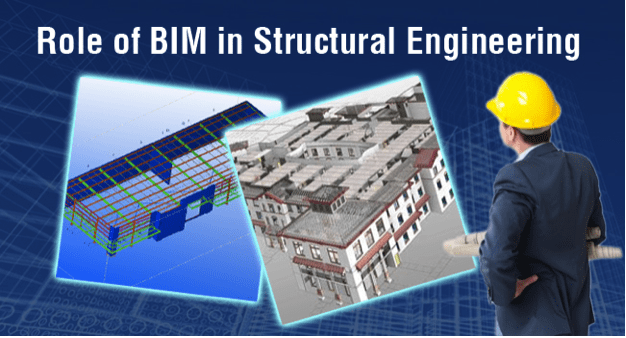Structural Engineers Readily Adopt BIM

Structural engineers from large organizations, multinationals and SMBs feel that BIM is not just an option but a requirement. Unlike architects, designers, contractors and fabricators, structural engineers are likely to use structural BIM modeling services beyond just the documentation or constructability aspect for simulations and structural analysis.
Structural engineers also experience the need to stay abreast of new contractual structures, particularly integrated project delivery (IPD). This in turn necessitates collaboration and coordination within the team and with aligned professionals such as fabricators, architects and contractors. This collaboration makes the use of BIM-enabled structural engineering a significant priority among structural engineers.

BIM for Structural Engineering
The multiple roles of BIM to save both time and money via improved efficiency are drivers in increased adoption by structural engineers, including:
- Coordinating consistent information and more effect collaboration with detailers, contractors, and fabricators for informed decisions
- Optimizing structural design via visualization, simulation and analysis for best performance
- Designing, fabricating and installing structural framework to eliminate clashes and rework requirements once the project goes on site
- Exploring design alternatives to optimize project outcomes
- Documenting structural designs in great detail for use across the project lifecycle and later for repair and renovation planning
- Predicting and optimizing the performance of building structure with analysis tools by simulating and visualizing the real world structural performance
Additionally, software analysis tools can be used in combination with Revit Structure to carry out several analytic studies that include:
- Linear static analysis
- Non linear analysis
- Dynamic analysis
- Seismic analysis
- Steel design and concrete design for members and surfaces – to local codes
By adopting complete BIM structural engineering and analysis solutions, a structural engineer can become a key player in the BIM process.
BIM for the Future
Virtual design is one of the most essential capabilities to help structural design firms maintain a competitive edge and stay profitable. With BIM, structural engineers have adopted new tools, technologies and workflows, and hence forth work with consistent and coordinated design models. Information-rich intelligent BIM helps engineers visualize, simulate and analyze structures for appearance, performance and costs.
Structural engineers and engineering firms are also taking advantage of breakthrough technologies like cloud computing, advanced mobility, outsourcing or engaging expert BIM professionals from anywhere across the globe.
Structural engineers use building information modeling to gain project insight and develop structures with compelling visualizations that help teams communicate effectively and obtain stakeholder approval. Using BIM, structural engineers can bag the best projects and execute them effectively to keep business running, expanding and flourishing.
About Bhushan Avsatthi
Bhushan Avsatthi is an Associate Director at Hi-Tech Outsourcing Services. Bhushan is a Consultant, BIM expert and a green building advisor with more than 15 years of industry experience. Bhushan imbibes the prophecy of efficient and prudent use of energy in his day to day life and advices his team to do so as well. He is also involved in green initiatives like nonprofit tree plantation project and promotes using bicycles for commuting small distances. Bhushan, handles a team of architects, structural and MEP engineers, LEED consultants and energy modeling experts.


